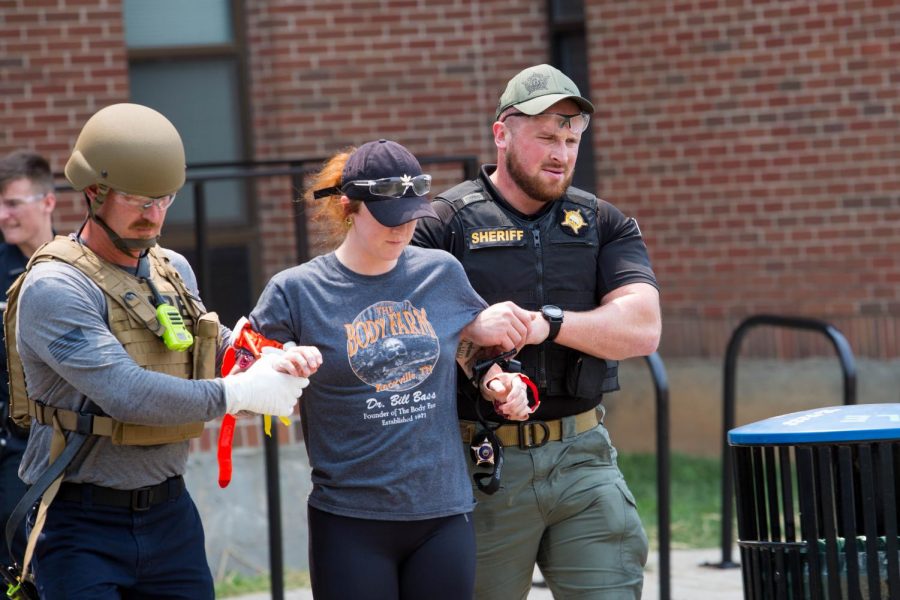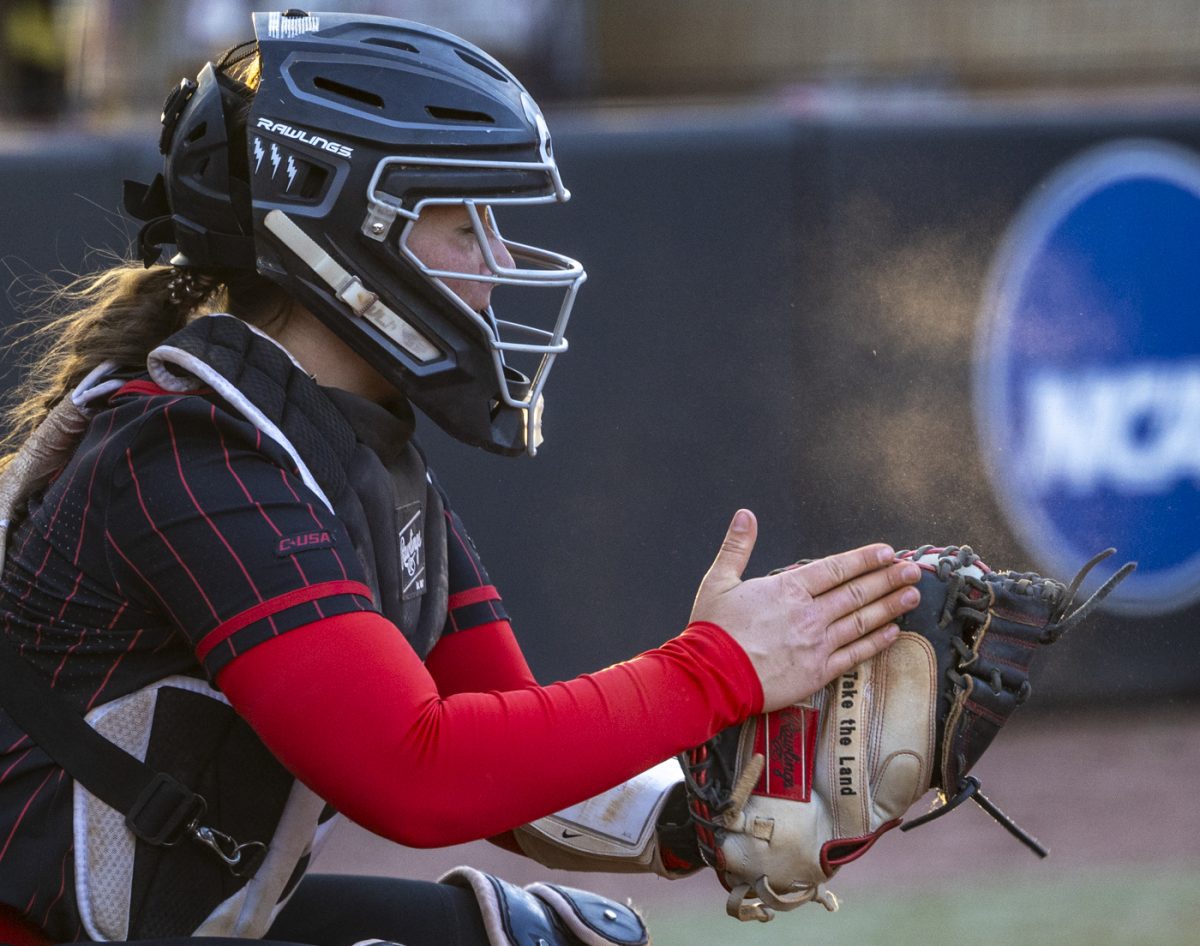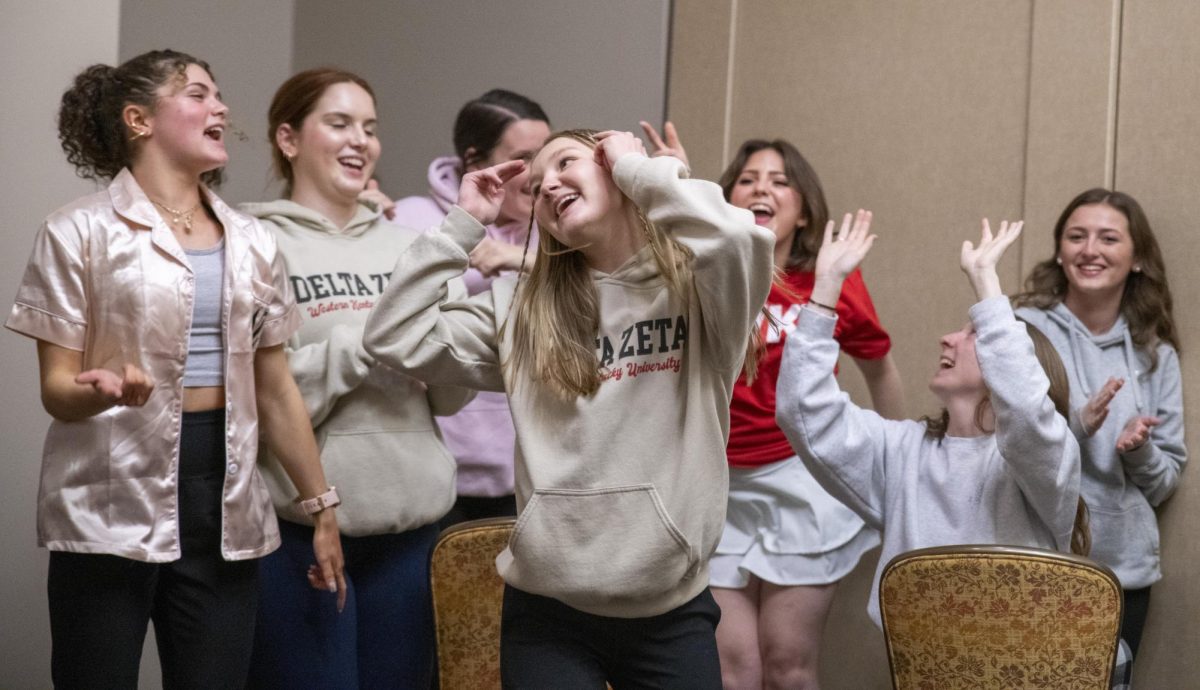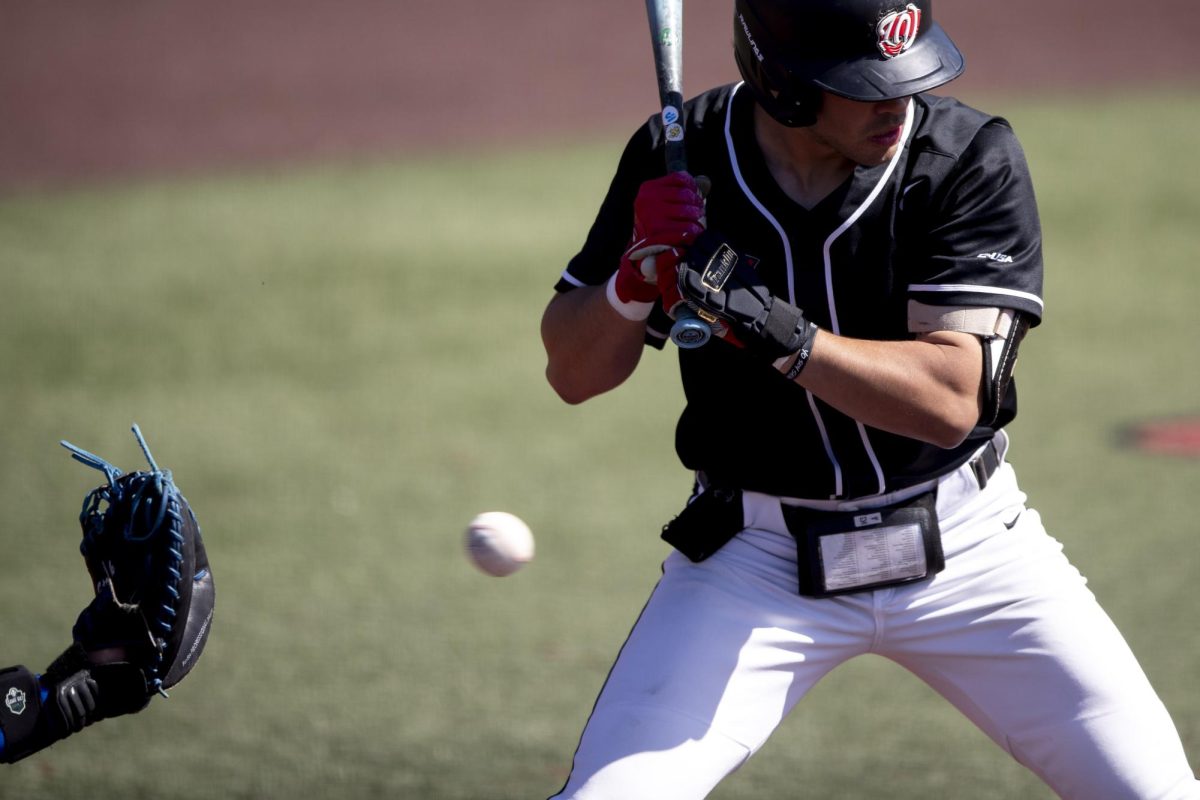Local law enforcement organizes active shooter training
Several local law enforcement agencies, emergencies medical services and the fire department participated in an active shooter training.
July 29, 2021
During a week, where the heat index has upwards of 105 degrees, local law enforcement agencies have donned their full gear for a rigorous three-day active shooter training alongside the fire department and emergency medical services at Hugh Poland Hall.
The WKU Campus police and the Bowling Green Police Department have been on site, along with the Warren County Sheriff’s Office, Kentucky State Police, and Smithsgrove Police. The training starts at 8 a.m. and finishes daily at 5 p.m.
“This gives us the opportunity to work jointly with EMS, Fire, Bowling Green Police, Kentucky State Police, and the Warren County Sheriff’s Office, so everybody has a better understanding of our roles and responsibilities,” Brett Hightower, Warren County Sheriff said.
Hightower says the goal is for the agencies to visualize what would transpire during an active shooting. During a real life scenario, a unified command center oversees different operations, including staging for ambulances and other emergency agencies response personnel. “There’s a lot of moving pieces,” Hightower said.
“We find out where we have any soft spots or areas that we need to have some additional accountability,” Hightower said. “There’s some things we’ve identified today and we hope to rectify those as well.”
Melissa Bailey, WKU police public information officer, said training begins with a briefing of everyone’s role. The police department, the fire department, and EMS all set up outside the building before the first police officer is sent inside the building one at a time.
This became a national standard after the Parkland, Florida shooting in 2018, Bailey said. The incident at Marjory Stoneman Douglas High School led to several fatalities because an officer stood outside to wait for backup instead of going in alone to stop the threat.
“On campus, we’re so close together. If we had something like this you’re going to be able to get two or three officers like; boom, boom, boom,” Bailey said. “If you’re out of the county at another school it’s gonna be two, three, four, five, ten minutes before you get other officers. You’ve got to save lives.”
The number one goal in an active shooter scenario is to neutralize the threat, Bailey said. After the threat is gone, the focus turns to the victims assessing their injuries, and keeping them from “becoming a casualty”.
After the threat is neutralized, the initial responding officer has to communicate with the Incident Command to let them know what’s going on and if EMS and the fire department need to be dispatched to that location. The next step is evacuating the most critical victims first followed by less crucial injuries.
The WKU website has an active shooter page that outlines what civilians should do if an active shooting took place. The page has three ways you can respond; run, hide, and fight. Bailey said the way to act is entirely what a person is comfortable with doing.
“That is still what we are teaching to our students, faculty, and staff as part of our active shooter presentations we give on campus is to run, fight, or hide,” Bailey said. “That’s basically what you as a civilian feel comfortable with doing. Do you run away? Do you feel more comfortable hiding? Are you comfortable fighting the suspect that’s coming in?”
The training involved role players, who were acting as victims inside of Hugh Poland Hall. Officers would help, carry, or stretcher out the role players as if they were injured. Some of the role players had fake wounds taped to various body parts to indicate an injury.
One of the role players was Zach Bell, a sophomore studying communications from Louisville. Having a criminal justice minor and an interest in law enforcement led him to participate in the training.
“I would recommend it for people,” Bell said. “It’s good to know how they operate in buildings. I’ve never seen it before so that’s another reason I’m here, just to see it.
Bailey said it is rare to get everybody together. The communication between these agencies are “very, very important” to stopping an active shooter scenario and limiting casualties.
“So it just allows us to all come together and train and learn everybody’s job and how we’re going to utilize each agency for an active shooter scenario, or something that would be a mass casualty that all agencies would need to be responding to,” Bailey said.
Staff reporter Wyatt Sparkman can be reached at steve.sparkman280@topper.wku.edu. Follow him on Twitter @wyattsparkman3.













